I'm currently working on an algorithm to detect bacterial centroids in microscopy images.
This question is a continuation of: OpenCV/Python — Matching Centroid Points of Bacteria in Two Images: Python/OpenCV — Matching Centroid Points of Bacteria in Two Images
I am using a modified version of the program proposed by Rahul Kedia. https://stackoverflow.com/a/63049277/13696853
Currently, the issues in segmentation I am working on are:
- Low Contrast
- Clustering
The images below are sampled a second apart. However, in the latter image, one of the bacteria does not get detected.
Bright-Field Image #1 (Unsegmented)
Bright-Field Image #2 (Unsegmented)
I want to know, given that I can successfully determine bacterial centroids in an image, can I use the data to intelligently look for the same bacteria in the subsequent image?
I haven't been able to find anything substantial online; I believe SIFT/SURF would likely be ineffective as the bacteria have the same appearance. Moreover, I am looking for specific points in the images. You can view my program below. Insert a specific path as indicated if you'd like to run the program.
import cv2
import numpy as np
import os
kernel = np.array([[0, 0, 1, 0, 0],
[0, 1, 1, 1, 0],
[1, 1, 1, 1, 1],
[0, 1, 1, 1, 0],
[0, 0, 1, 0, 0]], dtype=np.uint8)
def e_d(image, it):
image = cv2.erode(image, kernel, iterations=it)
image = cv2.dilate(image, kernel, iterations=it)
return image
path = r"[INSERT PATH]"
img_files = [file for file in os.listdir(path)]
def segment_index(index: int):
segment_file(img_files[index])
def segment_file(img_file: str):
img_path = path + "\\" + img_file
print(img_path)
img = cv2.imread(img_path)
img = cv2.cvtColor(img, cv2.COLOR_BGR2GRAY)
# Applying adaptive mean thresholding
th = cv2.adaptiveThreshold(img, 255, cv2.ADAPTIVE_THRESH_MEAN_C, cv2.THRESH_BINARY_INV, 11, 2)
# Removing small noise
th = e_d(th.copy(), 1)
# Finding contours with RETR_EXTERNAL flag and removing undesired contours and
# drawing them on a new image.
cnt, hie = cv2.findContours(th, cv2.RETR_EXTERNAL, cv2.CHAIN_APPROX_NONE)
cntImg = th.copy()
for contour in cnt:
x, y, w, h = cv2.boundingRect(contour)
# Eliminating the contour if its width is more than half of image width
# (bacteria will not be that big).
if w > img.shape[1] / 2:
continue
cntImg = cv2.drawContours(cntImg, [cv2.convexHull(contour)], -1, 255, -1)
# Removing almost all the remaining noise.
# (Some big circular noise will remain along with bacteria contours)
cntImg = e_d(cntImg, 3)
# Finding new filtered contours again
cnt2, hie2 = cv2.findContours(cntImg, cv2.RETR_EXTERNAL, cv2.CHAIN_APPROX_NONE)
# Now eliminating circular type noise contours by comparing each contour's
# extent of overlap with its enclosing circle.
finalContours = [] # This will contain the final bacteria contours
for contour in cnt2:
# Finding minimum enclosing circle
(x, y), radius = cv2.minEnclosingCircle(contour)
center = (int(x), int(y))
radius = int(radius)
# creating a image with only this circle drawn on it(filled with white colour)
circleImg = np.zeros(img.shape, dtype=np.uint8)
circleImg = cv2.circle(circleImg, center, radius, 255, -1)
# creating a image with only the contour drawn on it(filled with white colour)
contourImg = np.zeros(img.shape, dtype=np.uint8)
contourImg = cv2.drawContours(contourImg, [contour], -1, 255, -1)
# White pixels not common in both contour and circle will remain white
# else will become black.
union_inter = cv2.bitwise_xor(circleImg, contourImg)
# Finding ratio of the extent of overlap of contour to its enclosing circle.
# Smaller the ratio, more circular the contour.
ratio = np.sum(union_inter == 255) / np.sum(circleImg == 255)
# Storing only non circular contours(bacteria)
if ratio > 0.55:
finalContours.append(contour)
finalContours = np.asarray(finalContours)
# Finding center of bacteria and showing it.
bacteriaImg = cv2.cvtColor(img, cv2.COLOR_GRAY2BGR)
for bacteria in finalContours:
M = cv2.moments(bacteria)
cx = int(M['m10'] / M['m00'])
cy = int(M['m01'] / M['m00'])
bacteriaImg = cv2.circle(bacteriaImg, (cx, cy), 5, (0, 0, 255), -1)
cv2.imshow("bacteriaImg", bacteriaImg)
cv2.waitKey(0)
# Segment Each Image
for i in range(len(img_files)):
segment_index(i)
Edit #1: Applying frmw42's approach, this image seems to get lost. I have tried adjusting a number of parameters but the image does not seem to show up.












